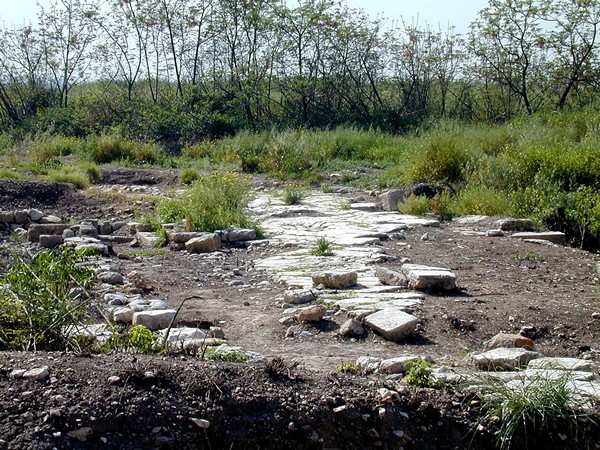What is…
Antipatris
Greek: Αντιπατρίς
Hebrew: אנטיפטריס
also known as: Aphek, Tel Afek (תל אפק) and Kŭlảt Râs el ’Ain—the latter meaning: “the castle of the spring-head”
This city was built by Herod the Great, and named in honor of his father Antipater who paved the way for Herod’s rise.
The Apostle Paul was brought to this place by night on his way to Caesarea Maritima, 28 miles away.
…the soldiers, in accordance with their orders, took Paul and brought him by night to Antipatris. But the next day, leaving the horsemen to go on with him, they returned to the barracks. —Acts 23:31-32 NASB
The more ancient name of this place is Aphek, a name which is mentioned a number of times in the Old Testament.
Antipatris lays in a strategic place in the Sharon Plain between Caesarea and Lydda, 2 miles inland, on the great Roman road from Caesarea Maritima to Jerusalem. It has always been a fortress.
It is identified with the modern, Ras al-Ayn (Ras-el-Ain) which has the largest springs in Israel. It is the source of the Yarkon River (aka Nahal HaYarkon, נחל הירקון, Yarqon River, Jarkon River, Nahr al-Auja, al-Auj, Aujeh, Auja River. نهر العوجا), the largest coastal river in Israel. After 17 miles (27.5 km) it flows into the Mediterranean Sea.
The Philistines army camped here during a war with the Israelites where they captured the Ark of the Covenant (1 Samuel 4).
The Philistines also gathered here in mass against Israel during the reign of King Saul.

Archaeology
An Egyptian fort was found here, and the governor’s residence. In 363 AD, the city was badly damaged by an earthquake. According to Josephus, Antipatris was built on the site of an older town that was formerly called Chabarzaba.
Very ancient plastered winepresses were discovered in excavations at Tel Aphek, dated to the 13th century BC, the reign of Ramesses II. Beneath and next to the treading floors Beneath were stone-lined plastered collection vats that could each store over 3,000 liters of pressed grape juice. Canaanite amphorae were recovered still in situ at the bottom of each pit, while a midden of grape skins, seeds and other debris was discovered adjacent to the installations.
Q & A
- Who are the men called Herod in the Bible, the Herodian Dynasty?
- Who is Herod the Great? and what did he do?
- Who is Paul? and what is his significance?
- What is Aphek?
- What is Caesarea, and what happened there?
- What is Sharon?
- What is the Kingdom of Judah (aka Judea)?
- About Ancient Rome in the Bible
- What is a spring? What springs are mentioned in the Bible?
- What are the rivers of the Bible
- Who are the kings of the Bible?
 What are the Cities of the Bible? Names, descriptions, locations and types
What are the Cities of the Bible? Names, descriptions, locations and types- Places in the Bible
 Discoveries of Bible archaeology
Discoveries of Bible archaeology
